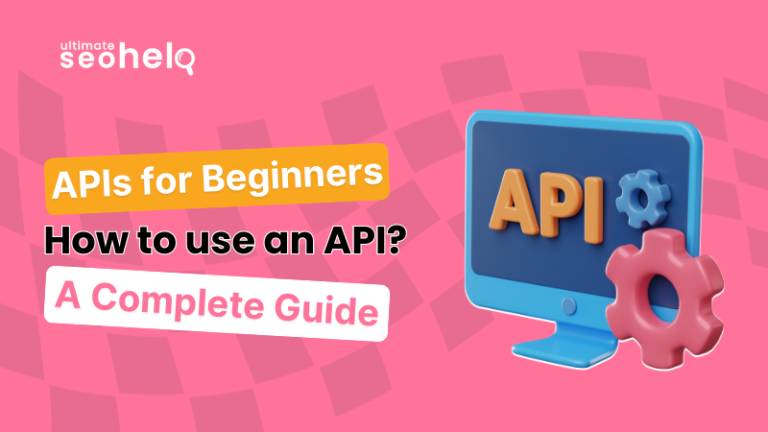In the ever-changing dynamic world of the internet, website developers and SEO experts come across several HTTP status codes that help unify efficient user experience and website management. To maintain a seamless and effective online presence, comprehending the complexities of HTTP status code is crucial for digital marketers, website owners, and developers. The “308 permanent redirect” is one such code that needs to be clarified.
The HTTP 308 permanent redirect response code is gradually becoming well-known, and most people who own or develop websites now prefer a 308 redirect instead of the traditional 301. But do they even make any difference in SEO? Let’s read this blog further
Understanding 308 Permanent Redirects: A Full Guide (2024)
Understanding the ins and outs of web traffic redirects is essential for anyone who manages a website, and it’s crucial to know about predefined HTTP response status codes like 308 and 301. Although serving the same purpose, these codes can be very different. They have various functions and significance both to the user and search engines. A 301 permanent redirect, commonly called a permanent redirect changing the URL, is well explained on the Mozilla Developer Network.
In contrast, a new method, 308 permanent redirect code (the new method ensures that no change occurs due to redirection), is documented in HTTP/1. This guide explains the differences between 301 and 308 redirects and when to use them.
What Is a 308 Permanent Redirect?
A 308 “Permanent Redirect” (3xx redirects) HTTP response status code (a three-digit number sent by a web server in response to the client’s request) indicating the browser and search engines that the resource has permanently moved into a new URL. Besides, the 404 error, an HTTP response indicating the server can’t find the page the client requested, is one of the other status codes you might be familiar with. As a user, you see a 404 HTTP status response code. A 404 error page will pop up.
However, 308 HTTP status code response isn’t highlighted often. This is because the 308 Redirect Permanent line instructs the browser to redirect you to the correct URL automatically. Additionally, the new page will have a portion of the link equity—the value that links bestow—and the authority of the page linking to it.
How Does 308 Permanent Redirect Work?
On the surface, the 308 Permanent Redirect status code looks the same as the 301 “Moved” HTTP status code. However, one main difference is that the 308 permanent redirect requires clients to use any method of the original HTTP request for the new request to the new location. Nevertheless, changing the original request method for subsequent requests with a 301 redirect is possible. These make the 308 redirects much safer because flip-flopping of the request methods is considered a security exploit.
Now let’s have a look at how 308 permanent redirect works:
- You place an order with an online shop, and the web browser sends a POST method request to the web server.
- Nevertheless, the checkout page’s address has been changed to the new URL location, and the web server gives the 308 status code.
- The browser sends a new POST request to the new page. It maintains order details where the purchase can be completed.
If the web server sent a 301 HTTP response code, your browser might have also been redirected from a POST to a GET method. Therefore, instead of you submitting your order details to the web server, the web server returns, perhaps, undesirable data to your device.
Key Differences Between 301, 308 & Other 3XX Status Code Redirects
The HTTP status codes of 3XX are all related to redirection. On the other hand, each code mapped to this class is dedicated to a particular context and enhances distinct attributes of the redirect process. This table compares the vital properties of the four HTTP redirect status codes 301 Moved, 302 Found, 307 Temporary Redirect, and 308 Permanent Redirect.
It’s pretty similar to 301 “Moved Permanently,” but there is a key difference in which HTTP methods get used:
- 301 Moved Permanently: When a GET or HEAD request causes a redirection, the user agent (for) can change the HTTP method of the following request from POST to GET. It has its downside, as redirecting the POST request is meant to make changes in a process, and the user agent then switches to a GET request, which can lead to the loss of the data sent in the POST.
- 302 Found: It says that the resource has been relocated temporarily and suggests keeping the original HTTP request method as either POST or GET. Search engines do not alter the links they use for temporary resources.
- 307 Temporary Redirect: Describes a temporary resource move and recommends maintaining the original request method as POST or GET. Search engines do not alter the links they use for the temporary resource.
- 308 Permanent Redirect: The user agent, however, should not alter the HTTP method used. If the initial request used the method POST, then the technique of the redirected request should also be POST.
This ensures 308 is a safer selection for those scenarios where the HTTP method and body must be passed in the requested redirect header.
| Factors |
301 Moved |
302 Found |
307 Temporary Redirect |
308 Permanent Redirect |
| Common Use |
Permanent Redirect |
Temporary Redirect |
Temporary Redirect |
Permanent Redirect |
| URL Location |
It gives instructions to browsers and search engines to update the resource location with a new URL address |
It gives instructions to the browsers and search engine crawlers not to update the resource location |
Gives instructions to the user agent not to update the resource location |
It gives instructions to the browsers and search engines to replace the old URL address with a new URL in the resource location |
| HTTP Request Method |
Permits the HTTP request method to be changed |
Permits the HTTP request method to be changed |
The HTTP request method doesn’t change |
The HTTP request method doesn’t change |
| Impact on SEO |
Transfers the old location’s SEO value to the new URL |
It doesn’t transfer the old URL’s SEO value to the new location |
The new location may transfer a portion of the old URL’s SEO value to the new one |
Transfers the old location’s SEO value to the new URL |
| Browser Support |
Universal support for all browsers |
Universal support for all browsers |
Universal support for all browsers |
Universal support in most browsers |
When To Use 308 Permanent Redirect?
The 308 permanent redirect status code is the key to remembering the new target resource location by search engines and clients who will use the same HTTP method in their redirected requests as in the original request. These aspects make the 308 status code useful in specific scenarios and conditions.
When you are beginning to move your site to a new domain, and you choose to redirect traffic from the old domain, you’ll need to make sure that POST requests, like those made by AJAX calls or web services endpoints, are not changed into GET requests. A 308 redirect retains the method across domains.
-
- Preserving Request Integrity
You may apply a 308 permanent redirect if you change the structure of your website. Let’s say we move a resource from one path to a new permanent URI (e. g., for example, from /old-directory/ to /new-directory/. The 308 redirects can automatically re-link all the references to the moved resources so that the users and search engines remain directed to the new URL forever.
-
- Enforcing Consistent Endpoints
Many services need your web page to have constant endpoints; for instance, a RESTful service where the endpoint’s method represents a specific action. Using a 308 HTTP response code, you can redirect the effective request URI to the actual resource without the risk of using a different method for the request.
In such a case, you have a form where clients submit data, which is moved to a new URL. The POST motion is retained by a 308 redirect, which means that even after the user is redirected to the new location, they continue to use the POST method. This is very important since, without it, the proper operation and safety of the form submissions might be compromised during and after the transition.
Effects of 308 Status Codes on SEO
There is always a concern about how redirecting resources from one location to another will affect search engine optimization (SEO). Mishandle redirects might result in harsh penalties from search engines. However, the 308 permanent redirects are usually safe to use if done with caution.
Some aspects that are affected by 308 status codes on SEO are given below:
-
- Preserves Ranking Signals
The 308 redirect retains the HTTP method used in making the original request. This is helpful to SEO as it informs search engines to transfer all the ranking factors, including link juice and page power, to the new URL.
-
- Eliminates Confusion for Search Engines
The 308 status code helps to eliminate the chances of search engines getting confused about the intent of the redirect by informing them that the new URL is permanent and must be retained while the HTTP method used is preserved. This can stabilize the SEO performance.
By retaining the HTTP method used to reach the page, the 308 response code guarantees that users are not presented with weird behavior on the new page they are being redirected to. Hence, it enhances user experience, an essential aspect of search engine optimization.
-
- Must Be Implemented Correctly
It has to be done right to experience maximum SEO benefits for your website from the 308 redirect code format. Misuse of the meta tags leads to abuses such as the redirect loops, and the pages are not likely to be indexed well, thus affecting the website score.
-
- Not Widely Supported by Browsers
Even though most modern browsers utilize the 308 response code, it remains less familiar than the 301 status code. You should investigate if your target audience’s search engines and preferred browsers accept this kind of redirect.
What’s Google’s Take on 308 Redirects?
Of course, the 301 and 308 status codes have their strengths, but which of them to choose depends on the situation. Generally, if there is no specific need to maintain the HTTP method, a 301 is preferable and widely accepted practice. However, if method preservation is necessary, the 308 stands out from the rest of the status code options.
Google seems to handle the 308 status code like other permanent redirections, such as 301 “Moved Permanently.” This implies that Google typically redistributes link equity or the ‘link juice’ from the first URL to the target URL and gradually updates to the new URL in its index.
Final Words
Regarding website redirects, 308 permanent redirects are the most traditional way of changing the URL and sending visitors to the URL of the new website page. They preserve the intact HTTP code, which facilitates the presence of original data like login details or shopping cart information for web owners when they send the users to the other URL address. 301 redirect is probably preferable (in terms of its being both less work and relatively safe) than a situation where you are not expected to retain any information (say, simply updating a blog post’s URL).
Data protection is coming first, so this should strictly be redirected to 308, which guarantees the visitors have a good experience and a smooth transition from the initial URL to the new one.










